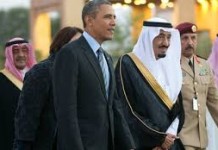Context

India’s Maoist problem refuses to go away. On June 29, Maoists killed 26 personnel of the Indian Central Reserve Police Force (CPRF) and injured 15 others in an ambush at Dhorai in Narayanpur district of Chhattisgarh state. The 66 member CPRF team was attacked by around 90 Maoists in a thickly forested area. The ambush continued for three hours and was the third major attack in three months on Indian police and paramilitary forces.
Analysis
While the attack showed the serious risk posed by the Naxalites, as the Maoists are called, it added further pressure on the Indian government to effectively tackle the threat, which is causing embarrassment to New Delhi. There are indications that officials are now taking the menace seriously and devising strategies to eliminate some 20,000 Maoist insurgents. In fact, the decades-old insurgency that started in West Bengal in 1967 in the form of a peasant’s movement, has now spread to 22 states of the country’s total 28. It is now the biggest internal security threat that India faces.
While the Indian defence ministry has refused to spell out clearly the new anti-Maoist strategy, some of the steps the ministry is taking are discernible.
First, there are reports that a unified command comprising military, paramilitary and police personnel would be set up to fight the Naxalites. It may be headed by a senior army officer of the rank of lieutenant general.
Second, the Indian Army is likely to use Special Forces to hit the Naxalite camps, but they would be brought in occasionally following appropriate intelligence reports.
Third, the Indian Army will take up training of the Chhattisgarh police, which is taking the brunt of the casualties. The training will be carried out in an open-air training institute in the Chhattisgarh state.
Fourth, the Indian government will use six UAVs in anti-Naxal operations. The UAVs belong to the National Technical Research Organisation (NTRO) and will be operated by the Indian Air Force personnel. The national security adviser heads the NTRO.
Fifth, the Indian Air Force will provide four helicopters while five more will be bought for the anti-Naxal operation. The primary role of the helicopters would be evacuation and deployment of troops.
Sixth, New Delhi may deploy Assam Rifles in Chhattisgarh. At present, the Assam Rifles are deputed at the Indo-Burmese border. They would be replaced by the Border Security Force (BSF), which is deployed at the borders with Pakistan and Bangladesh.
The Indian officials continue to debate the use of Indian Army in day-to-day operations against the Naxalites. The precedence already exists on the local use of Indian Army. It is presently conducting counter-insurgency operations in the disputed valley of Kashmir. In the past, Indian Army also carried out operations against the Sikhs in the Punjab state. However, the use of army against its own citizens comes with a price, usually in the form of human rights abuses and excesses against the civilian population.
Therefore, the use of the military may further alienate the rural population and increase support for the Maoists. The use of air power could result in large-scale civilian casualties. The states hit by the Maoist insurgency face the shortage of around 350,000 police personnel. Most police deaths have occurred because of a lack of proper training and limited knowledge about the insurgents and their tactics. The emphasis clearly should be on overcoming the shortage of policemen and effectively training them.
In the aftermath of the imposition of President’s rule in the Jharkhand state, Indian officials point out to the spread of Maoist insurgency, especially to West Bengal. While the crackdowns are proving effective, the shifting of operational bases to other areas would increase the scope of insurgency.
The use of UAVs may not be very successful against the insurgents in heavily forested areas. The operators sitting far away would, in some cases, be unable to distinguish between villagers and Maoists. The effective use of Predator UAVs in the early days of the Afghan war faced similar problems as operators often misidentified villagers as Taliban.
On the other hand, if New Delhi continues the use of police, the Congress government at the Centre may be seen as weak and undetermined. Understanding and addressing these issues is imperative. The Indian state cannot allow short-sighted maneuvers against the spreading insurgency, which may lead to general malaise and confusion. The importance of a clear, well executed strategy against the Maoists, therefore, cannot be denied. Ultimately the question boils to if the conflict will require a military or a political solution.
Tell Us What You Think



